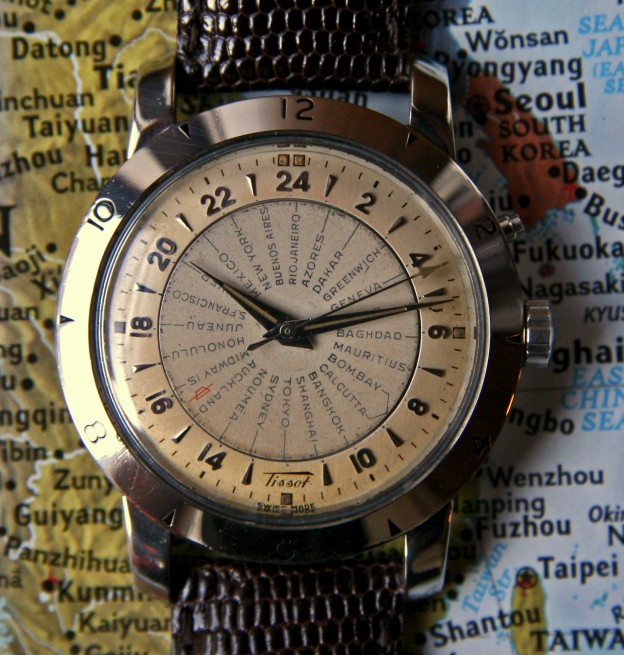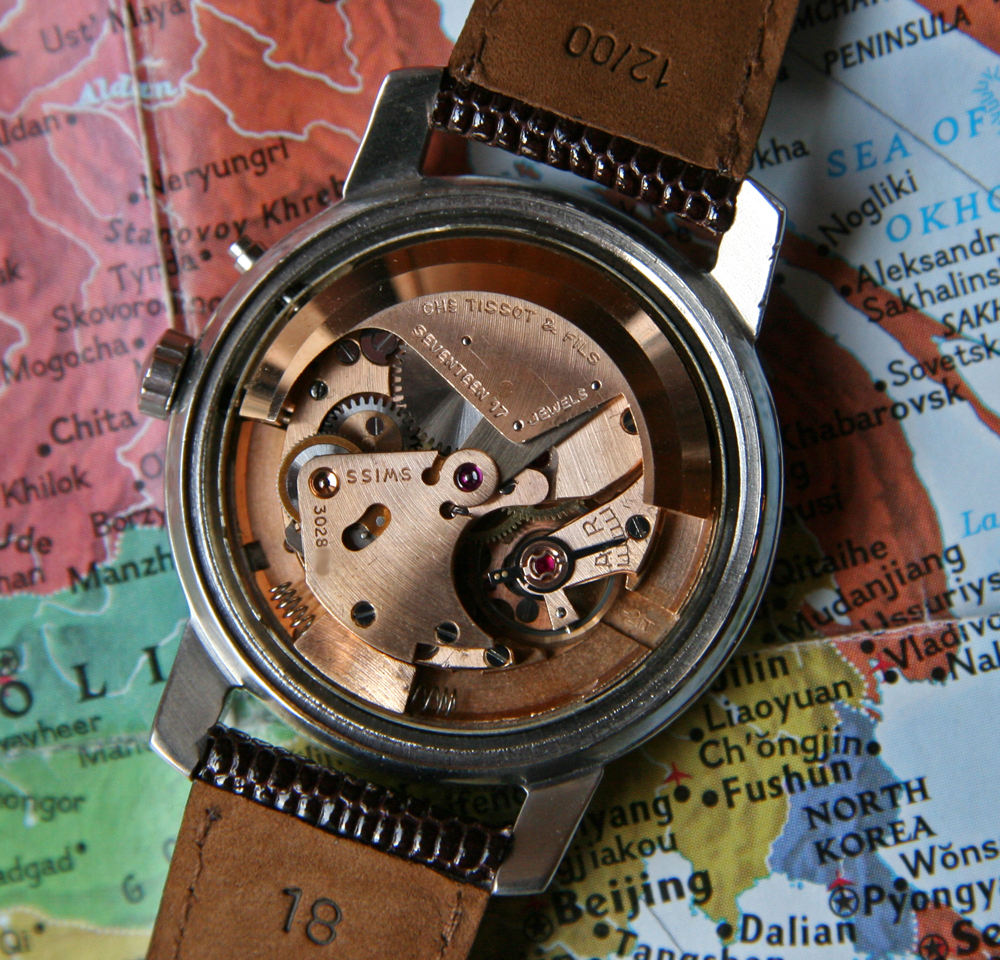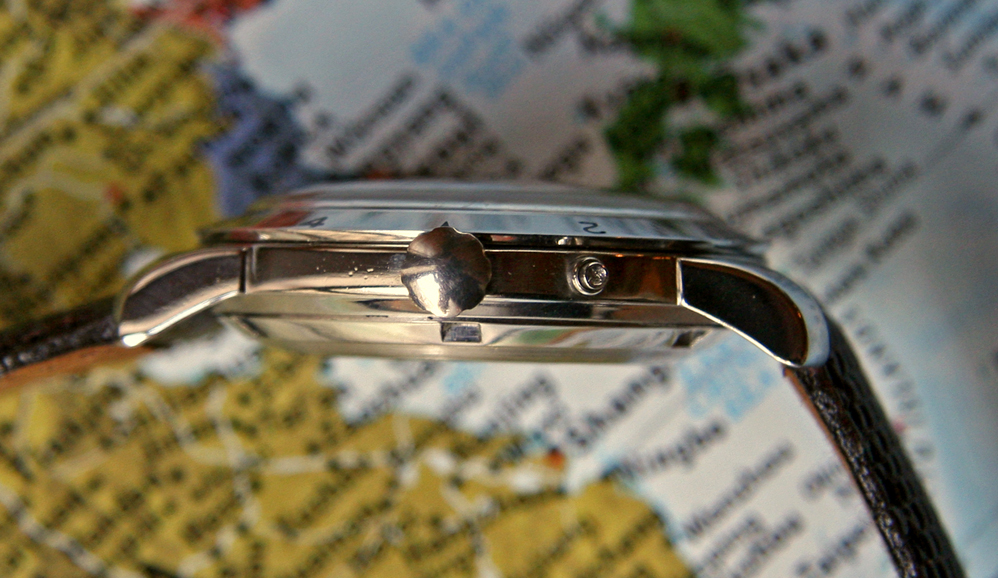The advent of Rolex’s GMT-Master in 1955 was the culmination of a creative arms race in the Swiss watch industry to come up with unique complications for telling time in two different timezones. The newly-dawned jet airliner age enabled intercontinental travel to explode in popularity and created demand for this complication in a wristwatch . A dual timezone watch, therefore, became a tool for the sophisticated world traveling gentleman or international man of action and was marketed by the manufacturers to exactly that putative clientele. Among the most enduring alternatives to an extra fixed 24-hour hand was the concept of rotating time zone discs or bezels with the names of cities representing the world’s different temporal regions. And among the handsomest and most clever produced during this burst of invention was the original Tissot “Navigator” World Time watch, which debuted in 1953 and therefore predates the GMT-Master by a few years.
Featuring an oversized 36mm x 44mm beefy lug screwed steel case (sometimes also found in gold top or solid gold) the Navigator achieved its dual time capabilities via an inner rotating world time disc that was calibrated to the 24-hour scale on the face of the watch. Meanwhile the hands of the watch simultaneously rotated in standard 12-hour time as read from the fixed engraved bezel with black enamel-filled numerals. The in-house Tissot cal. 28.5N-21T 17-jewel bumper automatic movement with shock protection powered the watch, with the “N” in the caliber designating the synchronized 24-hour disc and pusher setting complication unique to the Navigator.
The Navigator’s complication works this way: The small pusher at 0400/2 o’clock “hacks”/stops the center disc so that a second timezone or home time can be set while the world time disc remains stopped. For example, if one wants to set current time and location, you rotate the city of your home timezone to midnight, push the disc-stopping pusher and then sync up the hour and minute hand to midnight also. Then you can tell what time it is worldwide based on the other cities’ position on the 24-hour scale in relation to your home time. If you are traveling and want to set a second timezone, you push the disc pusher and then simply set local time. In this way, your home time remains constant against the 24-hour time while 12-hour time gives you the time at your current location. A pretty ingenious complication really!
Tissot continued with the Navigator line throughout the 60s with the watch morphing into a true 24-hour timepiece and the cities disc becoming an inner rotating bezel. And in recent years they have created a “Heritage” edition that is very faithful to the original and also reasonably priced with an MSRP of $1650 USD (and available for significantly less from outlets like Amazon).

But of course being the vintage guy I am, I still feel like the 1950s original is the one to own if you can find one in good condition. They are quite rare but can still be had for under $3k. Be sure that all the mechanical functions operate properly and that the vendor will guarantee this for at least a reasonable amount of time after purchase, as this movement is hardly a common one and the complication is unique to this caliber. One caveat: while the Navigator World Time is super cool and the word cities disc is beautiful to behold, the type is quite small and if your eyes are not perfectly up to snuff it can be very hard to read properly. That’s the only reason I sold mine — I could never get the cities in focus with my contact lenses or glasses on. But if you’ve got 20/20, young fella, I say go for it!





